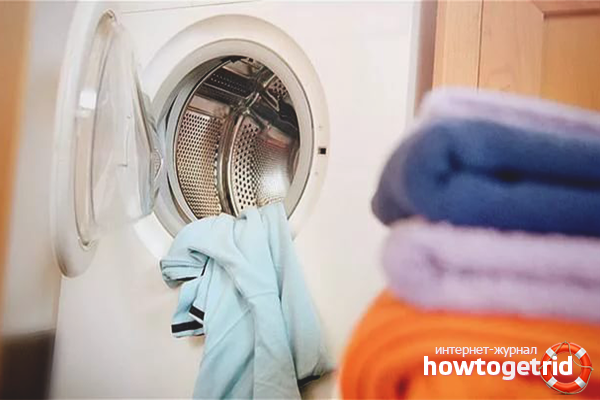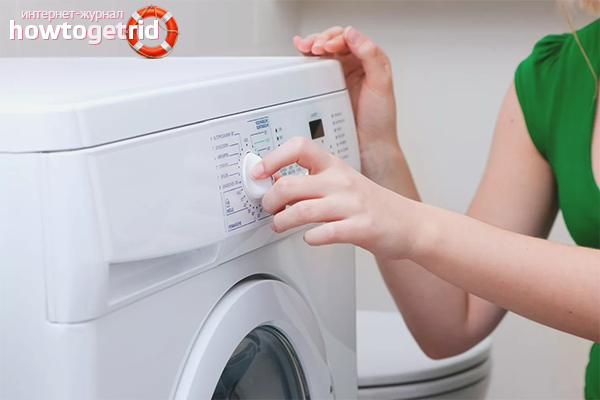The content of the article
A washing machine is considered to be one of the main assistants of each housewife. Today, no family can do without this unit. However, household appliances have an unpleasant feature of breaking, clogging, failing. To extend the duration of operation, which can sometimes be 10-12 years, it is necessary to adhere to the basic rules for care. This includes cleaning the internal components and external parts, the correct selection of detergents and other nuances.
Preparing the washing machine for use
- Any care for a household appliance begins when it is properly installed. The procedure must be carried out using a building level. The tool will allow you to set the machine evenly, without overloading any of the legs.
- Install the equipment so that it stands correctly in both vertical and horizontal directions. If necessary, place a piece of the board under the unit or unscrew the legs to the desired value.
- Ensure that the machine is properly connected to the network. To do this, select a separate new 220 V power outlet for the device, rely on the instruction manual. The manual indicates the power indicator at which the household appliance will work in the correct mode.
- Also make sure that the equipment is connected to the sewer and water supply. Access and water discharge hoses should freely move away from the machine. Avoid creases and strong pressure on the wall.
- Do not install the machine near radiators or near a shower / bathtub. In the event of frequent moisture ingress, the device will quickly turn yellow; you will have to constantly wash it with bleach or other aggressive agents.
- The first operation is carried out without loading laundry. Pour the powder marked “automatic” into the machine compartment. If possible, add water softeners. Set the wash for 1.5 or 2 hours, adhere to a temperature of 60 degrees.
Caring for the washing machine accessories
- Outside area. Basic care involves wiping the outer part of the device, the procedure is recommended to be carried out once a week. First sprinkle a cloth with glass cleaner, wipe the hatch. Then, with a damp sponge, go through the entire machine, collecting dust. Finish wiping with a dry, lint-free cloth.
- Detergent drawer. One of the most dirty places of a washing machine is considered to be the compartment into which washing powder is poured and rinse aid is poured. The tank can be pulled out and removed under the tap, cleaning must be done every 3-4 washings. Remove detergent residue with boiling water, then wipe dry with a cloth. Only after that is it necessary to insert the container back. If you neglect basic care, the powder granules will turn into plaque. It will harden and begin to mold.
- Cavity for rubbish. At the bottom of each automatic machine there is a compartment for collecting small debris (seeds, animal hair, human hair, coins, etc.). The container is easy to remove and clean. You need to scald it with boiling water, then wash with soda or bleach. If you neglect this advice, you run the risk of discovering mold in this compartment over time. If trash is not removed, the bathroom will always have an unpleasant odor. Timely action will eliminate the problem at the root.
- Water heater. Washing machines often suffer from scale that forms on an electric heater.In order to maintain the technical condition of the unit at the proper level, preventive measures must be taken every month. To do this, pour 250 g into the washed and dried powder compartment. citric acid or 400 gr. drinking soda. It is also necessary to add 100 or 200 gr., Respectively, to the drum itself. Then the machine starts on an intensive washing cycle lasting 1.5 hours and a temperature of 90 degrees. To avoid constant prevention, install a filter on the household appliance to soften running water.
- Rubber compressor. As a result of constant use of the household appliance, the seal located between the glass door and the drum wears out greatly. It must be wiped dry after each wash. General cleaning is carried out once every 10 days, while the gum is cleaned with soda or citric acid. Do not use bleach and alkaline agents that destroy the material.
The choice of detergents for the washing machine
- Choose loose and gel detergents designed for washing in a household machine. Look for “Automatic” on the product packaging. The compositions are developed taking into account all the requirements for water hardness, heating, the degree of extraction, etc.
- Some washing machines allow the use of detergents, which include enzymatic biological additives. Active components are designed to effectively remove complex contaminants and soften water. Powders and gels perform their function even at low temperatures (up to 45 degrees).
- To remove blood, fuel oil, cosmetics, coffee, choose a detergent marked “BIO”. The composition is suitable for delicate fabrics and baby clothes. Buy a powder taking into account the material (wool, cotton, synthetics, linen, etc.). Never put hand detergent into the machine.
- Many housewives make the mistake of adding too much powder to the machine. As a result of such actions, a large amount of foam is formed in the drum, it adversely affects the internal units, the rubber seal and the clothes themselves. Read the manual, observe the dosage.
Correct operation of the washing machine
- Maximum load. Household appliances for washing things have their own characteristics regarding the capacity of the drum and its weight load. If you send too much linen into the compartment, this will lead to quick wear of the internal parts, a large consumption of electricity and water. The engine will fail 30% faster than the allotted time. If a household appliance is designed for 5 kg. weights, it's about wet underwear.
- Checking pockets of clothing. To extend the life of household appliances, you need to check the pockets before sending things to the drum. Often in jeans or a jacket can be coins, screws, plastic parts and other accessories that penetrate the holes of the drum. Small items do not always reach the waste bin; they get stuck in the cavity of the device. Eliminate such consequences by removing everything from your pockets in advance.
- Button washing. If there are metal elements on the clothes (buttons, rivets, snake, accessories, etc.), take the habit of turning the products inside out. So you will prevent damage to things, the penetration of small parts into the compartment between the drum and the garbage container. For the best effect, it is recommended to use special bags for washing.
- Uninterrupted operation of equipment. The automatic machine requires an optimal voltage of electricity and a strong supply of water for washing. If you live in an area with a constant difference in these indicators, carefully choose the time of the procedure. For example, after 18.00 all people return from work. This means that water will be supplied with a low pressure. It is recommended to transfer the wash to late evening or morning of the next day.
- Choosing a program for washing. Observe the temperature regime that is included in the specific program. Stick to the specified spin level, no need to increase it by more than 100 revolutions. Choose a program for the weight of the laundry, do not try to wash an entire drum of heavily soiled clothes in 30 minutes. After completing the manipulations, wipe the tank with a dry cloth, shut off the supply of water and electricity. It is important to observe the interval between full washings (from 60 minutes or more), it should not be less than 2 hours.
- Sorting clothes. To keep products in good condition, sort clothes into white and color before washing. It is also important to consider the material and degree of contamination. The program is selected by type of fabric, the amount of powder is added as the things wear. Do not wash shabby and torn clothes in the machine, it will quickly become damaged and may get stuck in the holes of the drum.
- Washing shoes. Many housewives prefer to wash sneakers, slippers and work shoes in a typewriter. If you consider yourself in this category, carry out manipulations by placing shoes in a bag. You will prevent shoelaces from getting into unwanted crevices and quick wear of wardrobe items. Perform the procedure without spinning or at a speed not exceeding 400 revolutions.
- The correct layout of things. The automatic machine should not work empty all the time. Try to hammer the drum taking into account the average capacity of about 2/3 of the total volume. Otherwise, the excess of incoming water and detergents can cause interruptions in the operation of the equipment. Spread things in size, alternating large clothes with small ones. Proper layout is the key to high-quality washing.
Install the washing machine at the building level, connect to the water supply, network and sewage. Follow the rules of operation, choose detergents marked "Automatic". Wipe the outside and indoor units after each wash. Perform general cleaning once every 2-4 weeks.
Video: prevention for the washing machine











Submit